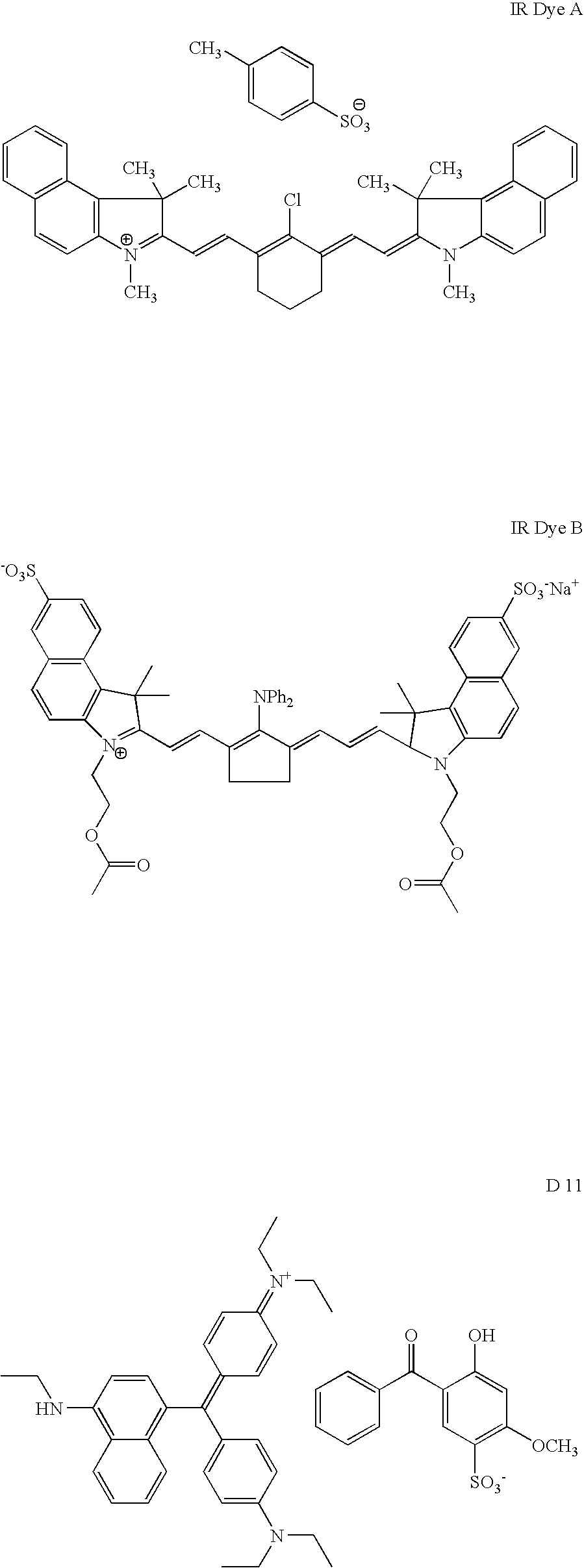Alkali resistant polymeric interlayers for lithoplates
a technology of alkali resistant polymer and interlayer, which is applied in the field of interlayers for lithographic printing plate precursors, can solve the problems of reducing the activity of developers, sludging in the processor and filter, and the current interlayer materials compatible with positive and negative-type imageable layers do not adequately protect the oxide layer of the support from high ph alkali developers
- Summary
- Abstract
- Description
- Claims
- Application Information
AI Technical Summary
Benefits of technology
Problems solved by technology
Method used
Image
Examples
example 1
[0098]This example illustrates the preparation of Substrate A, an aluminum substrate without an interlayer. A 0.30 mm thick aluminum sheet was alkaline cleaned, electrochemically grained with hydrochloric acid, etched in a caustic solution, anodized in sulfuric acid, and thoroughly rinsed and dried using conventional procedures. The resultant non-post-treated substrate had a Dmin of 0.36 (K), oxide weight of 2.5 g / m2, and a Ra roughness of 0.580 microns. The oxide layer had a thickness of 1 micron.
example 2
[0099]This example illustrates the preparation of Substrate B, an aluminum substrate without an interlayer. The aluminum substrate was prepared as in Example 1, except that the anodization process was performed in the laboratory using a dip-anodizing process, unlike the continuous web anodization process used Example 1 and Comparative Example 1. The support was dipped into a 25% solution of sulfuric acid for 50 sec at 25° C. A direct current was applied through a graphite electrode such that the applied current density was 8.1 A / dm2 and the charge density was 405 C / dm2. The support was removed, rinsed with water, and pressure dried.
example 3
[0100]This example illustrates the preparation of Substrate C, an aluminum substrate with a PVPA interlayer. Immediately after the anodizing and rinsing process, the aluminum substrate from Example 1 was treated at 65° C. with a 0.3% solution of PVPA in water. The immersion time was 13 sec. The substrate was then rinsed and dried.
PUM
| Property | Measurement | Unit |
|---|---|---|
| thickness | aaaaa | aaaaa |
| current density | aaaaa | aaaaa |
| temperature | aaaaa | aaaaa |
Abstract
Description
Claims
Application Information
 Login to View More
Login to View More - R&D
- Intellectual Property
- Life Sciences
- Materials
- Tech Scout
- Unparalleled Data Quality
- Higher Quality Content
- 60% Fewer Hallucinations
Browse by: Latest US Patents, China's latest patents, Technical Efficacy Thesaurus, Application Domain, Technology Topic, Popular Technical Reports.
© 2025 PatSnap. All rights reserved.Legal|Privacy policy|Modern Slavery Act Transparency Statement|Sitemap|About US| Contact US: help@patsnap.com

